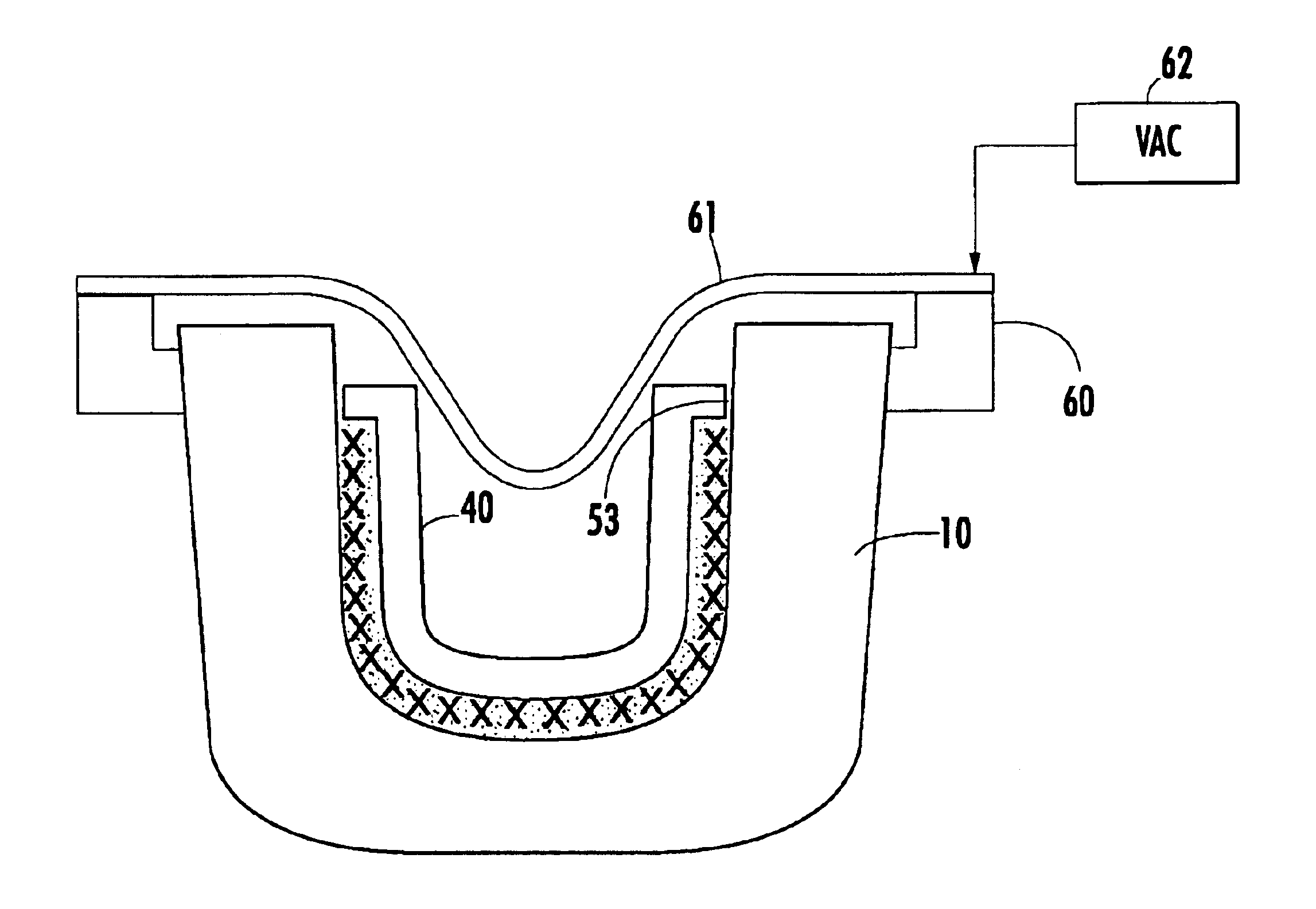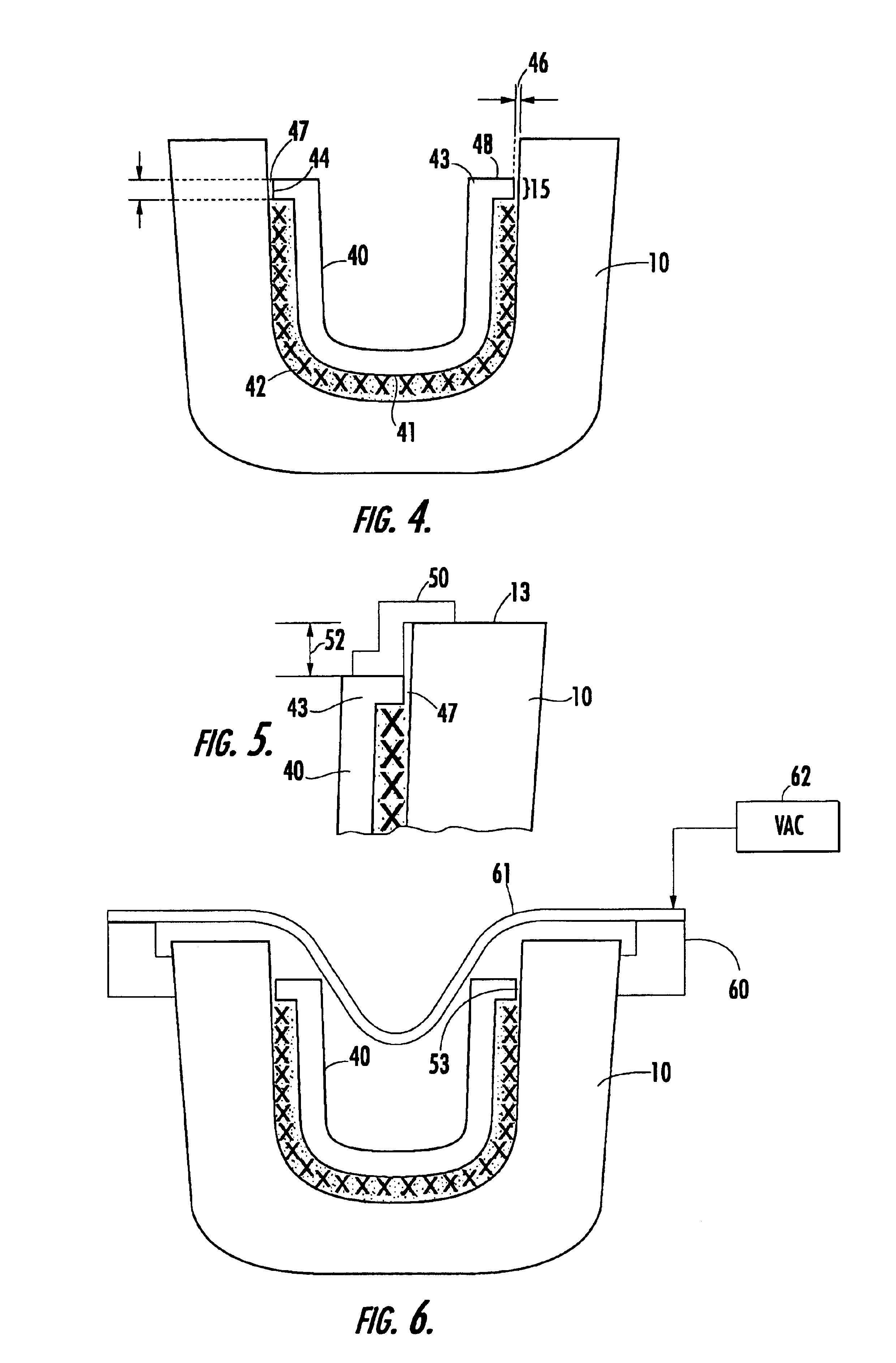Mandrel-assisted resin transfer molding process employing resin outflow perimeter channel between male and female mold elements
a technology of resin transfer molding and mandrel, which is applied in the direction of butter manufacturing, turning machine accessories, drawing profiling tools, etc., can solve the problems of poor part yield, less robust materials, and high cost of very robust molds used in rtm processes, so as to increase the density of parts, easy to excavate from parts, and increase the resin outflow
- Summary
- Abstract
- Description
- Claims
- Application Information
AI Technical Summary
Benefits of technology
Problems solved by technology
Method used
Image
Examples
Embodiment Construction
[0017]Before describing in detail the new and improved mandrel-assisted resin transfer molding method and apparatus therefor in accordance with the present invention, it should be observed that the invention resides primarily in a prescribed geometric relationship between mutually adjacent sidewall surfaces of each of the interior male mold element and the outer female mold element. As a consequence, the configurations of the components of the mandrel-assisted resin transfer molding architecture of the invention and the manner in which they are positioned relative to one another have, for the most part, been illustrated in the drawings in a readily understandable diagrammatic pictorial format, which shows only those specific details that are pertinent to the present invention, so as not to obscure the disclosure with details which will be readily apparent to those skilled in the art having the benefit of the description herein.
[0018]Attention is now directed to FIGS. 1-8, which are ...
PUM
| Property | Measurement | Unit |
|---|---|---|
| volume | aaaaa | aaaaa |
| perimeter | aaaaa | aaaaa |
| geometric shape | aaaaa | aaaaa |
Abstract
Description
Claims
Application Information
 Login to View More
Login to View More - R&D
- Intellectual Property
- Life Sciences
- Materials
- Tech Scout
- Unparalleled Data Quality
- Higher Quality Content
- 60% Fewer Hallucinations
Browse by: Latest US Patents, China's latest patents, Technical Efficacy Thesaurus, Application Domain, Technology Topic, Popular Technical Reports.
© 2025 PatSnap. All rights reserved.Legal|Privacy policy|Modern Slavery Act Transparency Statement|Sitemap|About US| Contact US: help@patsnap.com



